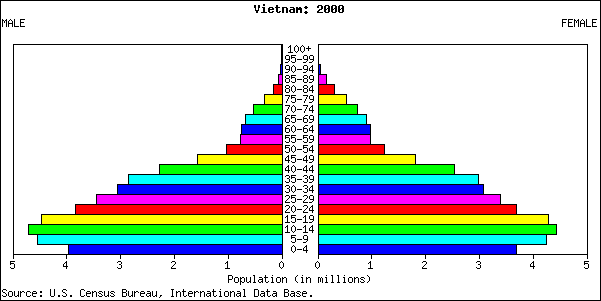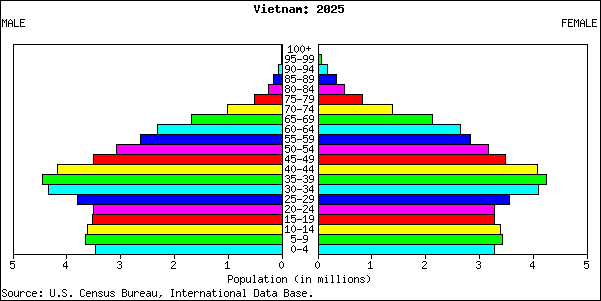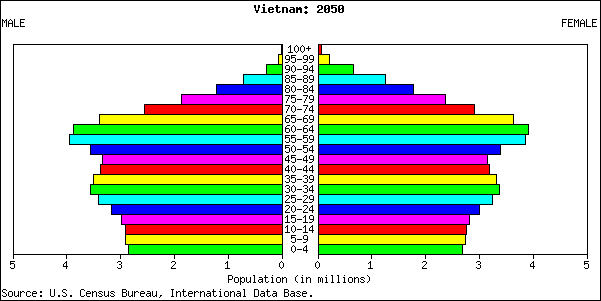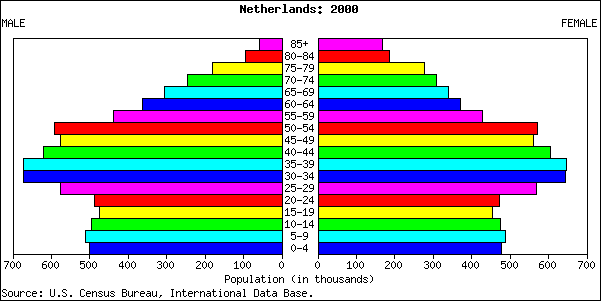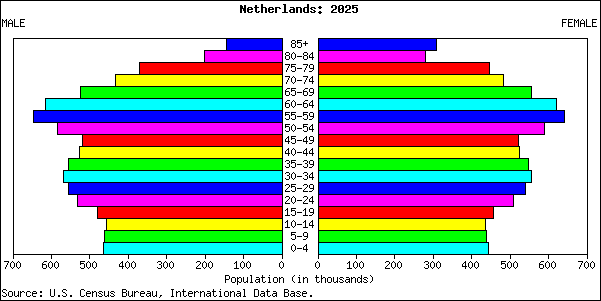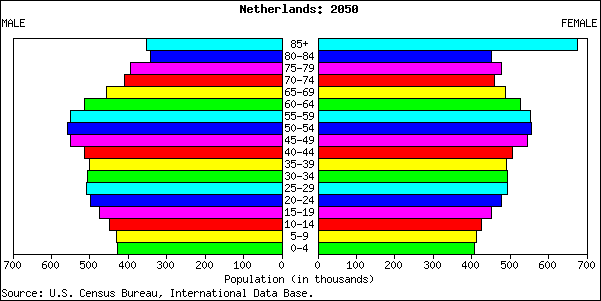Handouts4Teachers/Population Pyramid/Population pyramid handout
Contents
Description
On completion of this worksheet
|
Every county has a range of people of different ages, both females and males. The percentage of females and males in the different age groups can be shown on a chart. Males are graphed on the left hand side of the chart, while females are shown on the right hand side. The shape of the chart looks like a pyramid, hence the chart is called a population pyramid.
The shape of the pyramid can provide information about how the population is aging. Governments and agencies can use the population pyramid as a planning tool for future spending.
Task 1: Analysing Vietnam's population
Questions
1. What age group has the highest percentage of males in 2000?
2. Describe how the male and female population graphs are similar and different.
3. What does the population pyramid tell us about the population in Vietnam in 2000?
4. What are the implications, suggested by the population pyramid, on government spending in Vietnam in 2025?
Task 2: Comparing and contrasting two countries
| So how is Vietnam's population similar and/or different when compared to another country?
In this section you should compare Vietnam's population pyramids with either the data from
|
Go to http://www.census.gov/ipc/www/idb/summaries.html and find the population information for our country, or use another source for population data.
Alternatively, you can use the population data for the Netherlands provided below.
1. Write down the name of the country you have chosen to compare with Vietnam's population (i.e. your own country or the Netherlands)?
2. What age group and country has the highest percentage of males for 2000?
3. Describe how the male and female population graphs are similar and/or different from Vietnam.
4. What does the population pyramid tell us about the population in the 2nd country (the country you listed in question 1 above)?
5. What are the implications, suggested by the population pyramid, on government spending in the 2nd country in 2025?
Task 3: Personal reflection and summary
1. List at least 5 new facts I have learned.
2. What BIG ideas stand out?
3. Where else do I see similar issues?
4. What does this mean for me?
